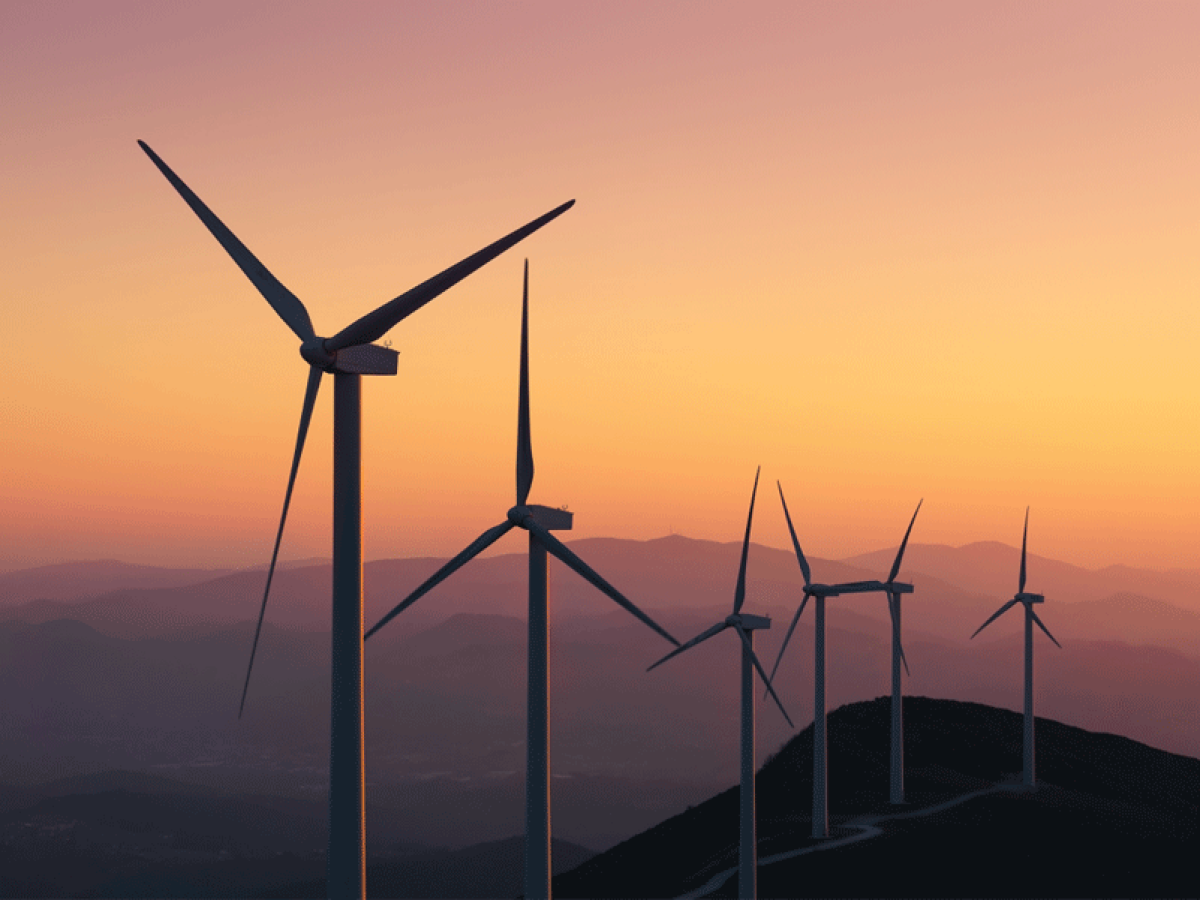Focus Markets
This article is over 3 years old
We can reach decarbonisation by 2050 with just 280 GW of new wind power capacity per year
The new report released by GWEC, Global Wind Energy Council about wind power capacity

The Global Wind Energy Council (GWEC), the international organisation with members representing over 1,500 energy-sector companies, organisations and institutions from more than 80 countries, has released its 16th report and it brings out the light and dark of the wind power market.
In 2020, 93GW of new wind power capacity was installed around the world, a year-on year increase of 53%. However, despite last year’s positive results, the GWEC analysis highlights that in the long term, these results are not enough to reach the goal of net zero emissions by 2050.
On this point, Ben Backwell, CEO of GWEC, declared: “People and governments around the world are realising that we have a limited window to head off dangerous climate change. While many major economies have announced long-term net zero targets, we need to make sure that urgent and meaningful actions are taken now to make sure this ambition is matched with fast growing investment and installations of renewable power on the ground and in the water. It is really encouraging to see record growth in China and US last year, but now we need the rest of the world to step up to get us where we need to be”.
Wind power has grown exponentially over the last few years in China and the U.S. The two countries lead the world market, alone representing 75% of new capacity installed in 2020 and half of the current capacity.
Today, there are 743 GW of wind power capacity installed in the world, avoiding the emission of 1.1 billion tonnes of CO2. These are significant numbers but to reach stable results, the GWEC stresses that we need to install wind power at a rate 3 times faster over the next 10 years to prevent the climate situation from getting worse.
According to the analysis conducted by IRENA and IEA, at least 180 GW of added capacity is required each year to maintain the global temperature increase below 2°C, while 280 GW/year is the amount needed to hit the target of zero emissions by 2050. Therefore, there is still a lot to be done, which is why politicians from every country must get to work on implementing strategic actions to bring their wind energy volume to the levels needed to reach established climate goals.
GWEC provides guidelines that governments should adopt to address the climate emergency in the best possible way. These include eliminating bureaucracy and reforming administrative structures in order to streamline and accelerate the license and authorisation granting process for projects; increasing investment in the infrastructure needed to expand green energy production installations; and renovating energy markets towards systems based on renewable energy, abandoning fossil fuels completely.
"The wind industry must work together with governments, communities, as well as other sectors such as solar, storage, and oil & gas to find solutions to accelerate the energy transition as efficiently as possible. Wind power both onshore and offshore, will play a crucial role in decarbonising [...] but this growth will not happen spontaneously, and urgent policy interventions are required worldwide. Throughout the COVID-19 crisis, we saw how governments can quickly react to address a global crisis – this same urgency must now be applied to the climate crisis”, commented Feng Zhao, Head of Market Intelligence and Strategy at GWEC.
Lastly, the GWEC report provides current market forecast data, predicting that 469 GW of new wind power capacity will be installed over the next 5 years. Additional data on the world energy market and two interesting tables summarising the global outlook of the onshore and offshore wind energy market in the various areas around the world from 2021 to 2025 are available at the official website of GWEC.
In 2020, 93GW of new wind power capacity was installed around the world, a year-on year increase of 53%. However, despite last year’s positive results, the GWEC analysis highlights that in the long term, these results are not enough to reach the goal of net zero emissions by 2050.
On this point, Ben Backwell, CEO of GWEC, declared: “People and governments around the world are realising that we have a limited window to head off dangerous climate change. While many major economies have announced long-term net zero targets, we need to make sure that urgent and meaningful actions are taken now to make sure this ambition is matched with fast growing investment and installations of renewable power on the ground and in the water. It is really encouraging to see record growth in China and US last year, but now we need the rest of the world to step up to get us where we need to be”.
Wind power has grown exponentially over the last few years in China and the U.S. The two countries lead the world market, alone representing 75% of new capacity installed in 2020 and half of the current capacity.
Today, there are 743 GW of wind power capacity installed in the world, avoiding the emission of 1.1 billion tonnes of CO2. These are significant numbers but to reach stable results, the GWEC stresses that we need to install wind power at a rate 3 times faster over the next 10 years to prevent the climate situation from getting worse.
According to the analysis conducted by IRENA and IEA, at least 180 GW of added capacity is required each year to maintain the global temperature increase below 2°C, while 280 GW/year is the amount needed to hit the target of zero emissions by 2050. Therefore, there is still a lot to be done, which is why politicians from every country must get to work on implementing strategic actions to bring their wind energy volume to the levels needed to reach established climate goals.
GWEC provides guidelines that governments should adopt to address the climate emergency in the best possible way. These include eliminating bureaucracy and reforming administrative structures in order to streamline and accelerate the license and authorisation granting process for projects; increasing investment in the infrastructure needed to expand green energy production installations; and renovating energy markets towards systems based on renewable energy, abandoning fossil fuels completely.
"The wind industry must work together with governments, communities, as well as other sectors such as solar, storage, and oil & gas to find solutions to accelerate the energy transition as efficiently as possible. Wind power both onshore and offshore, will play a crucial role in decarbonising [...] but this growth will not happen spontaneously, and urgent policy interventions are required worldwide. Throughout the COVID-19 crisis, we saw how governments can quickly react to address a global crisis – this same urgency must now be applied to the climate crisis”, commented Feng Zhao, Head of Market Intelligence and Strategy at GWEC.
Lastly, the GWEC report provides current market forecast data, predicting that 469 GW of new wind power capacity will be installed over the next 5 years. Additional data on the world energy market and two interesting tables summarising the global outlook of the onshore and offshore wind energy market in the various areas around the world from 2021 to 2025 are available at the official website of GWEC.




